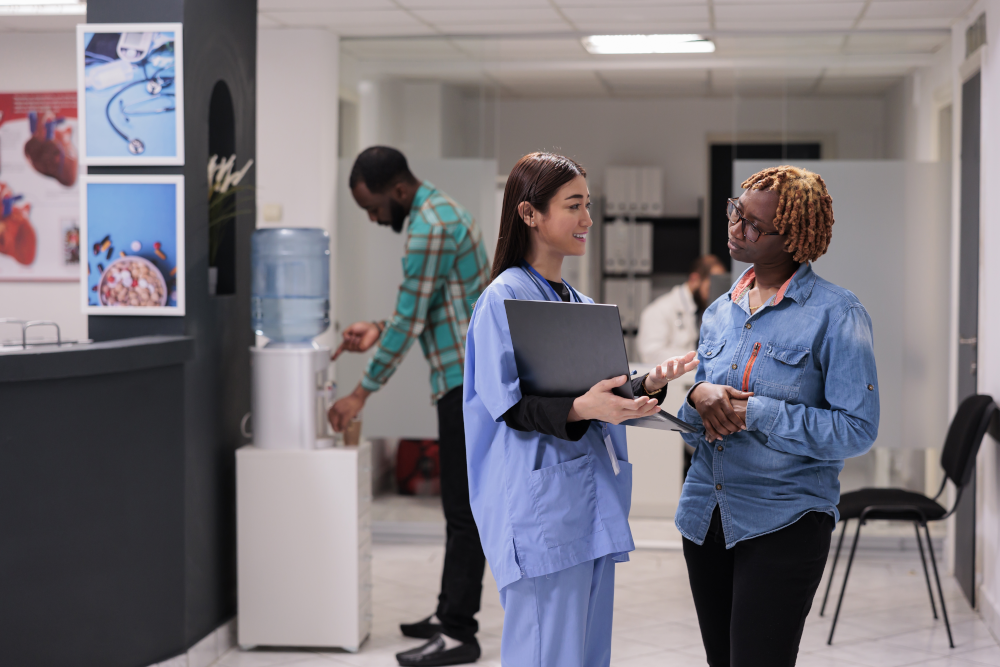Enhancing hospital navigation goes beyond mere functionality. It’s about creating an environment that intuitively supports and guides all who enter, particularly when they are under stress due to concern for a loved one. The design should be empathetic, acknowledging the emotional state of its users and facilitating a sense of calm and orientation through well-thought-out architectural and sensory elements.

Integrate Sensory Cues
Strategic use of architecture and sensory cues can transform hospital wayfinding into a more intuitive and less stressful experience. For instance, integrating clear, consistent signage can help in straightforward navigation, while the strategic use of wall colors and thematic artwork can serve as subtle guides, helping to differentiate various sections of the hospital. This approach not only aids in spatial orientation but also contributes to a calming atmosphere, which is particularly beneficial for visitors and patients who are anxious or overwhelmed.

Leverage Lighting and Nature
Thoughtfully designed lighting can play a crucial role in wayfinding, using brightness and contrast to naturally draw individuals towards main areas or pathways and using softer lighting to indicate more private or restful spaces. Incorporating natural elements like indoor plants or water features can also enhance the navigational experience, providing intuitive landmarks and contributing to a healing environment.

Enhance Navigation with Digital Wayfinding Solutions
Implementing technology, such as interactive digital kiosks or mobile wayfinding apps, can complement the physical design elements, offering real-time directions that cater to the unique needs of each visitor or patient. These digital solutions can provide reassurance and reduce anxiety by empowering users with the information they need to reach their destination confidently.
Ultimately, hospital wayfinding should be a harmonious blend of clear visual cues, supportive technology, and human-centered design, creating a space that is not only easy to navigate but also comforting and reassuring to those navigating the complexities of healthcare environments.

